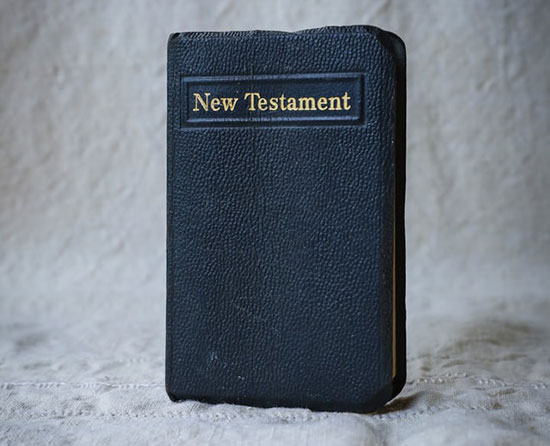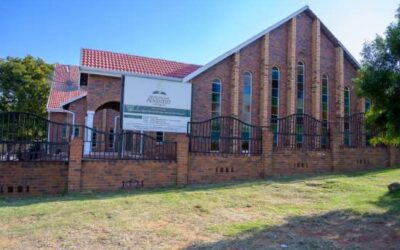Joseph Bates was a sailor-turned-preacher who joined the Millerite Movement and waited for Jesus to come in 1844. Despite being disappointed when this didn’t occur, Bates held onto his faith and played an enthusiastic and integral part in starting the Seventh-day Adventist Church.
Let’s explore how God used this energetic and sincere-hearted Christian.
We’ll learn about:
- Joseph Bates’s early life
- How Joseph Bates became a Christian
- Joseph Bates’s involvement in the Millerite Movement
- Joseph Bates’s role in the Adventist Church
Joseph Bates’s early life

Photo by Diego Catto on Unsplash
Joseph Bates was born in Rochester, Massachusetts, on July 8, 1792. About a year later, his family moved to New Bedford, a port town known for whaling. Being so close to the sea stirred in Joseph the desire to be a sailor.1
At 15 years of age, Bates convinced his parents to allow him to go as a cabin boy on a voyage. This experience was the beginning of his sailing career and countless adventures and hardships.
One time, Danish privateers captured Bates and the rest of the ship’s crew. When the crew was finally set free, they were penniless. Bates managed to make his way to Liverpool, England, where another hardship awaited him. This time, the Britons seized him and forced him to join their navy. He attempted to escape but failed.2
After two and a half years with the British navy, Bates became a prisoner during the War of 1812 because he refused to fight against his own country. This refusal landed him in the infamous Dartmoor Prison, from which he was finally released in 1815—five years after being forced into the navy.3
Despite these calamities early in his sailing career, Bates wasn’t deterred. After marrying Prudence Nye in 1818, he sailed for another ten years, eventually becoming a sea captain.
During that time, a small act of kindness by his wife would begin to change his life.
How did Joseph Bates become a Christian? 4

Photo by Mick Haupt on Unsplash
Though religion had been part of Bates’s life while growing up, he lost sight of God during his time as a sailor—that is, until a terrible storm at sea and the prayer of the ship’s cook convinced him that God had saved his life.5 Furthermore, before another voyage, his wife slipped a pocket New Testament into his travel trunk.
When Bates went to grab one of his novels to read, he picked up the New Testament and read a poem that had been written into its front cover. This poem, called “The Hour of Death,” impressed on him the fragility of life and convicted him of his need for God.
Forgetting about the novels he had packed, Bates became engrossed in the Bible.
One day, he realized that he needed to confess his sins and pray to God—for the first time. Finding a private place on the ship was not easy, but Bates managed to fit in a crawl space under the ship’s dining table.
Over time, he discovered the peace he had been seeking and committed to following God all the way.
The change in his life was noticeable. When Bates arrived home, he began attending the Christian Connection Church weekly and worshiping with his family each day. He also became an advocate for abolition (ending slavery) and the temperance movement (urging people to abstain from alcohol).
Life on Bates’s ship was different too. He didn’t allow alcohol or profanity and required his men to keep the Sabbath (Sunday at the time). At the beginning of the voyage, he would kneel and pray—an action that he later found out led some of the crew to become Christians.6
Joseph Bates and the Millerite Movement

Photo by Priscilla Du Preez on Unsplash
Bates retired from sailing in 1828 and decided to farm while continuing to serve God. In the fall of 1839, he heard a Millerite preacher proclaim that the Second Coming would take place in 1843 or 1844. Intrigued, Bates got a hold of some of William Miller’s lectures and read them. Soon, he accepted the message and promised to support it.7
He joined together with Joshua V. Himes, a leader in the Millerite Movement, whom he had known from his work with temperance. Bates was soon a leader also, helping organize one of the Millerite general conferences in 1840.
In preparation for Jesus’ coming, Bates sold his farm and paid off his debts. Then, he committed to traveling and preaching to everyone who would listen.
When Jesus didn’t come on October 22nd, 1844, Bates and his wife were disappointed, but they didn’t lose their faith. Bates continued to travel and encourage the disheartened Millerites.
As a small group of believers began learning new truths in the Bible, Bates too made some discoveries.
Joseph Bates and the Seventh-day Adventist Church
After the Great Disappointment, Bates stayed connected with many of the Millerites who were trying to make sense of October 22nd. Bible study helped them find answers. As their doctrines became more developed, they founded the Adventist Church.
His greatest contributions to Adventism include:
- Introducing the Sabbath truth
- Holding leadership roles
- Promoting a healthy lifestyle
- Publishing articles and tracts about the Bible
We’ll look at each one in more detail.
The Sabbath truth8

Photo by Adrian Curiel on Unsplash
The Millerites who awaited Jesus’ coming in 1844 were Sunday keepers, but this would change when Bates learned about the seventh-day Sabbath through a Millerite preacher named Frederick Wheeler. After this, Bates began sharing the Sabbath truth with early Adventists.
But here’s how it got to Bates in the first place.
At the beginning of 1844, Rachel Oaks, a Seventh-day Baptist, heard a sermon by Frederick Wheeler.
Afterward, she confronted him: “While you were speaking, Elder Wheeler, I could scarcely contain myself. You said that we must observe all of the Ten Commandments, and yet you yourself constantly break one of them!”
Wheeler must have been a little stunned.
“Why, Sister Oaks, whatever do you mean?”
“I mean that the fourth commandment says, ‘The seventh day is the Sabbath of the Lord thy God,’ but you keep the first day.”
Mrs. Oaks was bold, for sure. But it worked.
Frederick Wheeler became the first Sabbath-keeping minister in North America. He passed on this truth to a man named Thomas Preble, who wrote an article about the Sabbath in February 1845.
When Bates came across that article, he immediately began the 140-mile trip to visit Wheeler (remember—people couldn’t just hop in their cars and go places!). Though arriving late at night, Bates didn’t hesitate to wake Wheeler. The two men discussed and studied the rest of the night.
On the way home, Bates decided he would keep the seventh-day Sabbath. He became an avid promoter of it to the other Millerites.
Here’s one example:
In 1846, Bates read an article by O.R.L. Crosier, which gave a biblical explanation for what had happened on October 22nd, 1844. Instead of returning to the earth, Jesus had begun a work of judgment in the Most Holy Place of the sanctuary. Upon reading this, Bates set off to meet Crosier, Edson, and other Millerites. Even as he learned from them, he convinced them of the Sabbath too.
That same year, he wrote his booklet The Seventh-day Sabbath, A Perpetual Sign, which gave biblical and historical evidence for the Sabbath. He shared a copy with James and Ellen White, co-founders of the Adventist Church, leading them to accept it as truth.
Leadership roles
As the small group of Advent believers grew, Bates became more involved in its leadership meetings and helped to found the Adventist Church.
Though he didn’t hold any official titles in the Church, he traveled and preached all throughout the east coast. He also often chaired the Sabbath-keeping Bible conferences.9 And in 1860 he chaired a meeting in Battle Creek, Michigan, that brought about the official organization of the Adventist Church.
A healthy lifestyle

Photo by Jenny Hill on Unsplash
In the 1860s, Ellen White, one of the leaders of the Adventist Church, began speaking more on the subject of a healthy lifestyle. Joseph Bates recognized principles that he had already been following for many years, so he began to share them with others as well.
Back in the 1820s, Bates had decided to give up tobacco and alcohol completely. By 1844, he also quit drinking coffee and became a vegetarian.10
Not to mention that he was physically active, walking many miles throughout his years of travel!
And his lifestyle decisions paid off. At the age of 75, he was able to say, “I am entirely free from aches and pains!” He lived to be 80 years old and still preached 100 times in his last year of life!11
His example inspired the other Adventists and helped shape Adventist beliefs about health today.
Publications

Photo by micheile dot com on Unsplash
Even with all his traveling and speaking, Bates found time to write. He authored two booklets that gave biblical and historical evidence for the Sabbath as well as many articles for the Review and Herald, an Adventist periodical.
When Bates decided to write his first booklet, it was a faith venture because he had very little money at the time. In fact, he was so broke that he spent his last money to buy his wife four pounds of flour.12 But he trusted that the Lord would provide for them.
That same day, he went to the post office and found a surprise letter waiting for him.
The contents?
Money to provide for his family and write the booklet. The Lord did provide!
Because of Bates’s faith, his publications directed people to the truths of the Bible and shaped Adventist doctrine.
A powerhouse in the Adventist Church
Joseph Bates was one of the many earnest, Christ-centered founders of the Adventist Church.
Dying in 1872, he left behind a life of energy, drive, and unstoppable faith—both as a captain and an Adventist. He never grew weary in sharing the truth and pointing people to Jesus.
We can thank Bates for the way he promoted and established many of our Bible-based beliefs, including the Sabbath and a healthy lifestyle.
- Bates, Joseph, Life of Joseph Bates: An Autobiography (Review and Herald, 1927), p. 13 [↵]
- Maxwell, C. Mervyn, Tell It to the World, (Pacific Press, Nampa, ID, 1977), p. 77 [↵]
- Bates, pp. 64, 71 [↵]
- Ibid., pp. 135–137 [↵]
- Maxwell, p. 77 [↵]
- Bates., pp. 169–170 [↵]
- Ibid., p. 180 [↵]
- Maxwell, pp. 74–76 [↵]
- Ibid., p. 80 [↵]
- Ibid. [↵]
- “Joseph Bates,” The Ellen G. White Estate [↵]
- Ibid., pp. 81–83 [↵]
Related Articles
More Answers
What Does “Adventist” Mean
Seventh-day Adventists are a Protestant Christian denomination who hold to the biblical seventh-day Sabbath. From this belief, they get the first part of their name.
William Miller
William Miller was a farmer in the early 1800s who gave his life to God and began intensely studying his Bible.
Who was J.N. Andrews and How Did He Contribute to Adventism?
John Nevins Andrews (1829–1883) was an influential leader in the early days of the Seventh-day Adventist Church. He was a Bible scholar who helped shape several Adventist beliefs and juggled many roles in the Church. Most notably, he was the first official missionary for the Adventist Church outside North America.
Seventh-day Adventist Founders
The key figures and founders of Seventh-day Adventism were a group of people from various Protestant Christian denominations who were committed to studying the Word of God and sharing about Jesus Christ.
The Millerite Movement
The Millerite Movement was a religious revival that started in 1831 when the Baptist preacher William Miller, an earnest student of the Bible, began preaching and writing about the soon return of Christ. Due to a misinterpretation of a prophecy in the book of Daniel, he and his followers concluded that Jesus Christ was coming back sometime around 1843 or 1844.
What is the Great Disappointment and What Can We Learn From It?
On October 22, 1844, thousands of Christians in the Northeastern United States eagerly watched the skies for what they believed would be the second coming of Jesus Christ.
Who Was James Springer White?
James Springer White (1821–1881) was a key figure in the Seventh-day Adventist Church and the husband of Ellen G. White.
Didn’t find your answer? Ask us!
We understand your concern of having questions but not knowing who to ask—we’ve felt it ourselves. When you’re ready to learn more about Adventists, send us a question! We know a thing or two about Adventists.











